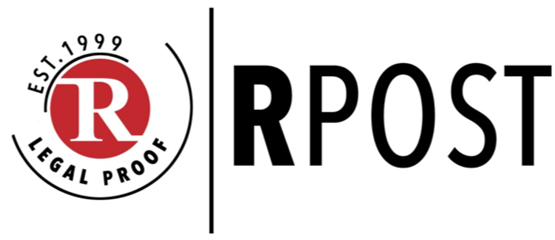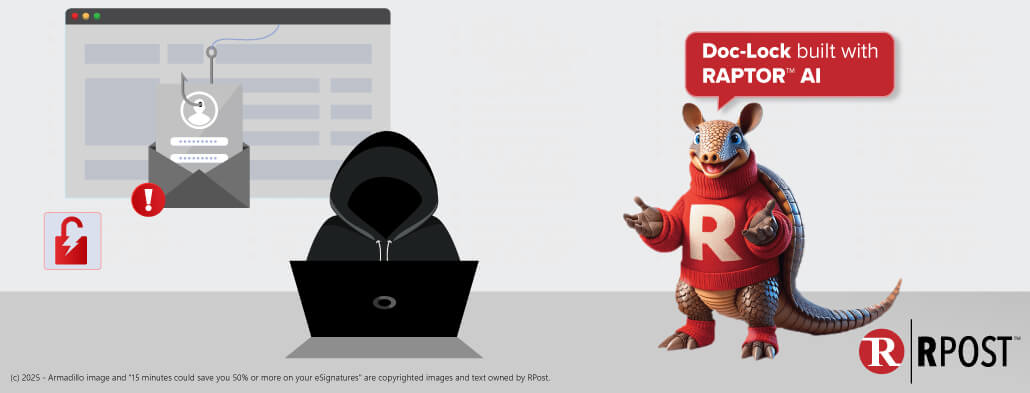
The Leahy–Smith America Invents Act (AIA), signed into law in 2011, has created new opportunities for those accused of patent infringement to challenge the validity of granted patents, with the institution of new “post-grant” proceedings.
Today, the validity of RPost patents have been challenged by companies, including Symantec, Swiss Post, Experian, EBay, Epsilon, and Constant Contact. These companies instituted requests for post grant reviews, including Ex-parte Re-examinations, Inter Partes Reviews, and Covered Business Method Reviews.
To date, eight of RPost’s US patents upheld their validity after post-grant reviews conducted by the United States Patent and Trademark Office and its Patent Trial and Appeal Board.
These RPost patents include US 8,224,913, US 8,209,389, US 8,161,104, US 6,182,219, US 6,571,334, US 7,966,372, US 8,504,628, and US 8,468,199 claims 1-8. These patents broadly provide RPost exclusive rights to claimed technologies to track and prove delivery, content delivered, opening, replies, and more; for electronic messages.
RPost practices its inventions.
What is a patent? In short, a patent is a government granted exclusive right to a specified technology in exchange for early disclosure sufficient to teach the world how to build the invention.
Why is this area of the law important? Lawmakers believe that early detailed disclosure of inventions will to spur further marketplace innovations, as many technologies are incremental advancements. More innovation will spur a more robust and advanced economy.
Inventors must make an early decision — voluntarily disclose the invention to potential new competitors and the world, or maintain the invention as a trade secret. To provide incentive to inventors to disclose their inventions early — to facilitate others innovating on top of these inventions — the government offers the opportunity for a 20 year exclusive right to that technology if, after much review, it is deemed to be a true technological invention, and is determined to be, after a worldwide review of other inventions and disclosures, an original invention.
Specifically, the patent discloses the invention, and then describes the elements of the invention that the inventor believes are the unique, technological invention. These become the claimed exclusive real property right owned by the inventor. A patent is real property; technology property that is defined as a “claim”.
RPost today has more than fifty patents granted in 22 countries with hundreds of “claims”. Some examples of RPost patent claims — exclusive technology owned by RPost — are systems and methods of authenticating delivery and opening of electronic messages, systems for encrypting email, recording recipient replies to received documents and messages, and more. Examples follow of claims that upheld validity after post-grant reviews:
US 8,161,104 Claim 27. A system for transmitting a message from an originating processor to a recipient processor in an electronic mail system and providing an indication that the message was opened by the recipient processor, comprising: a server in electronic communication in the electronic mail system, the server receiving the message from the originating processor and adding a link to the message before transmitting the message and link to the recipient processor, the link being configured to execute automatically when the message is opened at the recipient processor to control the server to provide an indication at the server that the message has been opened at the recipient processor; and wherein the server constructs authenticatible information related to the message; and wherein the server transmits the indication of the opening of the message at the recipient processor and the authenticatible information to the originating processor.
US 8,468,199 Claim 1. A method of transmitting a message from a sender to a recipient through a server displaced from the recipient, the steps at the server comprising: receiving the message at the server from the sender; transmitting the message to the recipient; receiving at the server at least a portion of a data transport protocol dialog generated during transmission of the message from the server to the recipient; and receiving at the server from the recipient an indication of the failure to deliver the message to the recipient; forming at the server a first information from the at least a portion of the data transport protocol dialog and the indication of the failure to deliver the message by the recipient; and transmitting, before any authentication of the message, a copy of the first information to the sender from the server.
US 8,504,628 Claim 30. A system for transmitting a message from a sender to a recipient, comprising: a server configured to receive a message from a sender, the server being remote from a recipient of the message, the server also being programmable using software commands to determine if there is a particular indication present in the message that identifies the message as requiring special processing before the message is transmitted to the recipient, to transmit the message from the server to the recipient through a first route if the message lacks the particular indication, and to process the message in accordance with the particular indication if the particular indication is present.

April 25, 2025

April 17, 2025

April 11, 2025

April 04, 2025

March 28, 2025